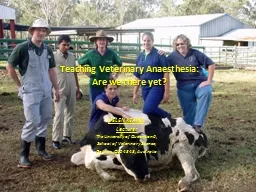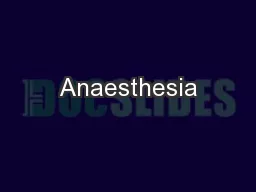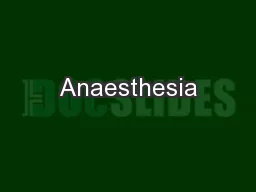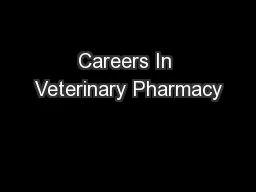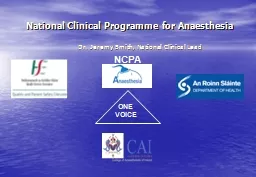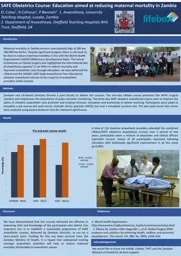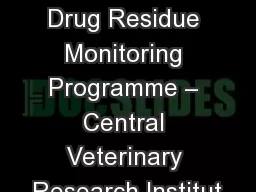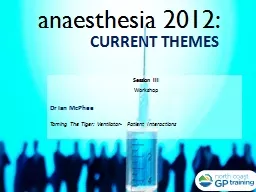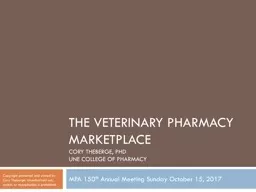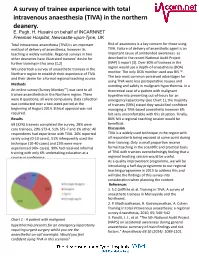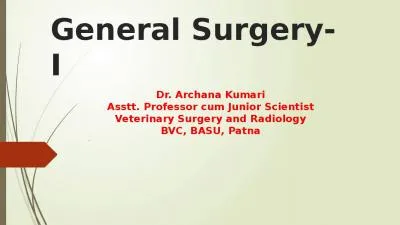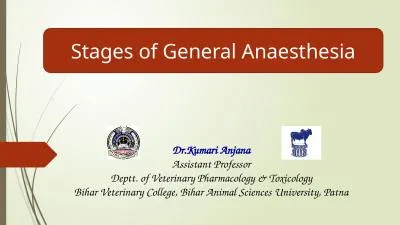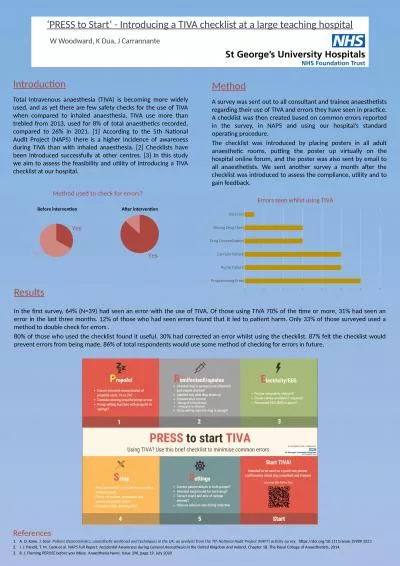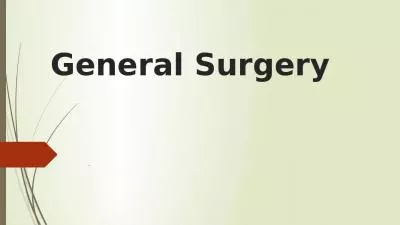PPT-Teaching Veterinary Anaesthesia:
Author : liane-varnes | Published Date : 2015-11-29
Are we there yet HELEN KEATES Lecturer The University of Queensland School of Veterinary Science Gatton QLD 4343 Australia Veterinary Science in Australia
Presentation Embed Code
Download Presentation
Download Presentation The PPT/PDF document "Teaching Veterinary Anaesthesia:" is the property of its rightful owner. Permission is granted to download and print the materials on this website for personal, non-commercial use only, and to display it on your personal computer provided you do not modify the materials and that you retain all copyright notices contained in the materials. By downloading content from our website, you accept the terms of this agreement.
Teaching Veterinary Anaesthesia:: Transcript
Are we there yet HELEN KEATES Lecturer The University of Queensland School of Veterinary Science Gatton QLD 4343 Australia Veterinary Science in Australia Programs offered . A dog food that meets these requirements is called a Complete or Balanced diet The amount of food a dog requires depends on the animals age breed gender activity temperament environment and metabolism Proteins Co mprised of 23 different amino acids Emily Matthews (. e.k.matthews@warwick.ac.uk. ). What is anaesthesia?. Loss of sensation. Three ‘types’ of anaesthesia. General. Regional . (e.g. spinal, brachial plexus block, femoral nerve block). Introduction to anaesthesia. Terms . Anaesthesia . Anesthesiologist. Anesthetist . m. odern general anesthesia is based on the ability to provide adequate analgesia and amnesia during surgical procedures.. Building your skill set/finding your job. Gigi Davidson, . BSPh. , DICVP. Director of Clinical Pharmacy Services. NC State College of Veterinary Medicine. What is veterinary pharmacy?. Clinical pharmacy practice. NCPA. ONE VOICE. Dr. Jeremy Smith, National Clinical Lead. . National Clinical Programme for Anaesthesia . Work-streams L. ead . TPOT Dr. Jeremy Smith. 1 . Despite significant progress there is still work to be done to reduce maternal mortality in line with the World Health . Organisation’s. (WHO) Millennium Development Goals. The Lancet Commission on Global Surgery also highlighted the international lack of . Dr.. P. . Fandamu. Chief Veterinary Research Officer. Presentation outline. Background. Objective of the programme. Materials and Method. Preliminary results. Conclusion. Background. An important aspect food safety (animal derived food) is the control of residues. Session III. Workshop. Dr . Ian McPhee. Taming The Tiger: Ventilator- Patient . Interactions. Taming the tiger. Ventilator – Patient interactions. Ian McPhee. Anaesthesia and the lung. Increased P. Cory Theberge, . phd. . une. college of Pharmacy. MPA 150. th. Annual Meeting Sunday October 15, 2017. Copyright protected and owned by Cory Theberge. Unauthorized use, access, or reproduction is prohibited. . E. . . Pugh, H. . Husaini . on behalf of INCARNNET. Freeman Hospital, Newcastle-upon-Tyne, . UK. Total intravenous anaesthesia (TIVA) is an important method of delivery of anaesthesia, however its teaching is widely variable. Regional surveys in two other deaneries have illustrated trainees’ desire for further training in this area [1,2]. Kumari. Asstt. . Professor cum Junior Scientist. Veterinary Surgery and Radiology. BVC, BASU, Patna. Historical perspective. Salihotra. . and . palakapya. . were the greatest of ancient India . veterinarians. Dr.Kumari. . Anjana. Assistant Professor. Deptt. . of Veterinary Pharmacology & Toxicology. Bihar Veterinary College, Bihar Animal Sciences University, Patna. A.E.Guedal. (1920) . describe depth of anesthesia by dividing it into stages and planes for ether anesthesia based on following criteria:. W Woodward, K Dua, J . Carrannante. Method used to check for errors?. Method. A survey was sent out to all consultant and trainee anaesthetists regarding their use of TIVA and errors they have seen in practice. A checklist was then created based on common errors reported in the survey, in NAP5 and using our hospital’s standard operating procedure. . Salihotra. . and . palakapya. . were the greatest of ancient India . veterinarians. Salihotra. . treated . horses. & . Palapya. . treated. Elephants. According to Vedas, medical science arose from veterinary science. .
Download Document
Here is the link to download the presentation.
"Teaching Veterinary Anaesthesia:"The content belongs to its owner. You may download and print it for personal use, without modification, and keep all copyright notices. By downloading, you agree to these terms.
Related Documents

